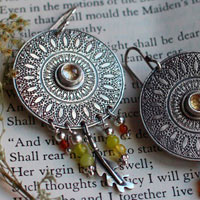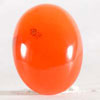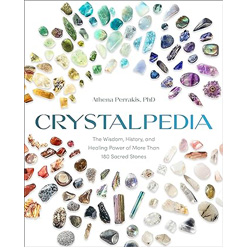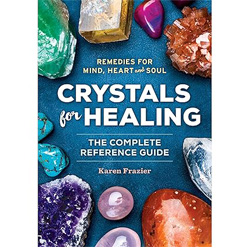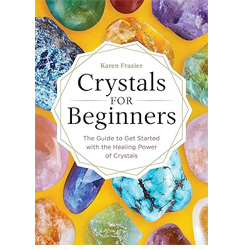- Jewelry
- Inspiration
- Our imagination
- Birthstones
- Celebrating with Eternal Flowers
- Druids and druidesses
- Flower meanings
- History, archeology jewelry
- History and healing properties of metals
- History and healing properties of stone
- Illumination jewelry
- Japanese symbols
- Maya calendar jewelry
- Stone color symbolism
- Stones catalogue
- Wedding anniversaries
- Searches a theme on the site
- Good Deals
- Paintings
- About
- Contact
JEWELRY
- Anklet
- Bracelets
- Brooches
- Cufflinks
- Earrings
- Pendants & Necklaces
- Rings
- Draw your jewelry
- How to clean your jewel
- Metal we used
INSPIRATION
- Our imagination
- Birthstones
- Celebrating with Eternal Flowers
- Druids and druidesses
- Flower meanings
- History, archeology jewelry
- History and healing properties of metals
- History and healing properties stones
- Illumination jewelry
- Japanese symbols
- Maya calendar jewelry
- Stone color symbolism
- Stones Catalogue
- Wedding anniversaries
- Searches a theme on the site
Carnelian: history, healing properties and lithotherapy
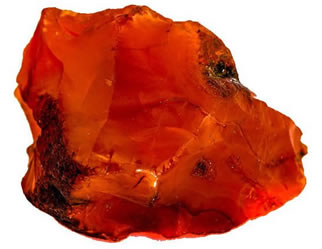
Carnelian properties
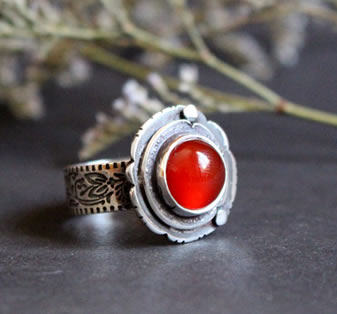
The name of carnelian is still a subject of debate regarding its origin.
Some suggest that its name comes from the Medieval Latin "corneolus," derived from the Latin "cornum," associated with the cherry dogwood tree, due to its resemblance to the translucent fruit.
Others propose an origin linked to the Latin "caro" or "carnis," meaning "flesh," in reference to its distinctive color, often perceived as the hue of living flesh. The reddish-orange appearance of carnelian also evokes the warmth of blood, further reinforcing this symbolism.
In the time of Pliny the Elder, it was known as "Sard," associated with the city of Sardes in Libya (modern-day Sardis in Anatolia, a major center of ancient trade), or possibly derived from the Persian word "sered," meaning "yellowish-red." In ancient classifications, the distinction between sard and carnelian was sometimes ambiguous, with sard generally referring to a darker variety of carnelian, often brownish-red in hue.
Carnelian is also known as the "Mecca stone," highlighting its characteristic color that resonates with the sacred hues of certain Muslim rites. This name reflects its traditional use in the making of talismans or amulets worn during pilgrimages.
Although sometimes referred to as the Sadoine stone, it should be noted that the latter differs slightly from carnelian, primarily by having a darker shade, though the distinction is subtle. The Sadoine stone, lesser-known, is often considered a historical variant of carnelian, with local legends placing it at the heart of ancient rituals.
Carnelian is a translucent variety of chalcedony, displaying a spectrum of colors ranging from orange to red. These vibrant hues are due to the presence of iron oxide impurities within the stone’s crystalline structure. Depending on the concentration of these impurities, carnelian can exhibit shades ranging from yellow-orange to reddish-brown. It is traditionally known that heat treatment can enhance or alter these colors, as the iron impurities react to heat, intensifying the red tones. This method has been employed since antiquity, particularly in Egypt and Mesopotamia, to enhance the stone’s beauty.
It is important to note that carnelian, due to its popularity, is one of the most frequently counterfeited stones. Often, agates are altered by soaking them in a ferric nitrate solution to mimic carnelian, a technique that produces a similar color, but often with less saturation and distinct patterns. These dyed agates typically reveal multicolored lines and irregular banding, in contrast to the uniformity of natural carnelian, which shows a consistent color. However, this distinction can be subtle to the untrained eye, making careful evaluation essential when purchasing. Experts recommend sourcing stones from reputable deposits, such as those in India or Brazil, to ensure authenticity.
Stories, beliefs and legends about the carnelian
Carnelian, a significant gemstone, has left its mark on various civilizations around the world, particularly in regions where it was abundant.
Traces of carnelian date back to the Neolithic period, notably at the site of Mehrgarh in Pakistan, dating from the 4th to the 5th millennium BCE. Perforated pieces found at this site highlight its early use as a material for jewelry-making, underscoring both its aesthetic and symbolic appeal.
Its influence also extends to the Minoan Bronze Age, where archaeological discoveries in the palace of Knossos in Crete revealed the early use of carnelian for the production of seals, likely used to mark trade exchanges or as symbols of authority. This stone was often engraved, a practice that became widespread across ancient civilizations.
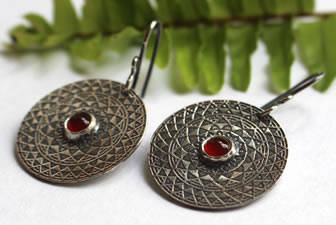
Carnelian played a significant role among the Sumerians, as evidenced by the discovery of carnelian jewelry in the tomb of Queen Puabi of Ur, dating to around 2600 BCE. This precious stone was valued for both its aesthetic and symbolic significance, reflecting the wealth and spirituality of Sumerian culture. Carnelian was believed to have the power to preserve the soul after death and promote prosperity in the afterlife, connecting the gem to funerary rituals.
In ancient Egypt, carnelian held major religious importance. The goddess Isis used it to protect the dead on their journey to the afterlife, linking it to rebirth and eternal life. Egyptians inscribed parts of the Book of the Dead onto carnelian amulets, which were believed to ease the souls' passage into the next world. These amulets, often shaped like hearts, symbolized truth and justice during the weighing of the souls. Additionally, carnelian was worn by architects to denote their social rank, emphasizing the high status of these builders in Egyptian society.
The Egyptians also referred to carnelian as the setting sun because of its red color, symbolic of blood and life, which made it central in their beliefs, particularly in rituals related to the life, death, and rebirth cycle.
Among the Romans, carnelian was used not only in jewelry but also in seal rings, as hot wax did not stick to the stone. This made carnelian an ideal material for signet rings, which often bore engraved images such as wild animals, symbols of protection and luck. Carnelian rings were commonly used by nobles and merchants to authenticate documents.
Both Greeks and Romans frequently wore carnelian-engraved signet rings, some featuring figures of the god Sarapis or the goddess Isis, both associated with time and death. These symbolic figures reinforced the mystical dimension of carnelian, linking it to spiritual protection and guidance in the afterlife.
The Hebrews believed that carnelian offered protection against the plague.
In the Bible, carnelian is one of the precious stones adorning the breastplate of the high priest Aaron, as described in the Book of Exodus. Its presence on this sacred garment underscored its religious and spiritual significance in the Jewish tradition, as well as its associations with purification and protection.
In Christianity, carnelian was also the symbol of the apostle Philip. According to the 1st-century archbishop of Mainz, it represented the blood of martyrs, linking carnelian to themes of sacrifice and faith.
In Islam, the seal of the prophet Muhammad was a carved carnelian set in a silver ring, symbolizing his spiritual and religious authority. In Islamic tradition, carnelian is still revered and worn by some believers as spiritual protection. It is also credited with healing properties, including the ability to stop bleeding.
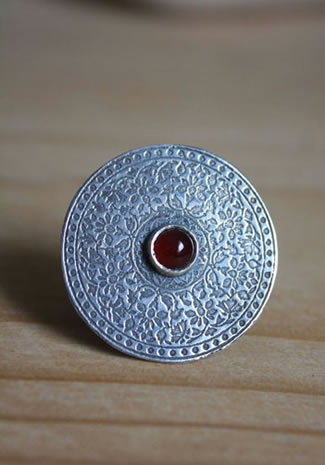
In Arab tradition, carnelian was believed to have the power to stop bleeding, thereby reinforcing its association with vitality and the preservation of life.
Medieval alchemists regarded carnelian as a "hot stone," believing in its ability to activate the properties of other stones. They considered it a catalyst for mineral energies and a powerful tool in the transmutation of metals.
Today, Buddhists in China, India, and Tibet continue to revere carnelian for its protective powers. They uphold the Egyptian tradition by associating it with turquoise and lapis lazuli, a practice aimed at amplifying its beneficial properties. In Tibetan Buddhism, carnelian is often used in the creation of malas (prayer beads), as it is considered an emotional stabilizer that helps calm the mind and enhance concentration during meditation.
Mines: Saudi Arabia, Australia, Brazil, India, Uruguay and the USA
Healing properties and benefits of the carnelian
Throughout human history, man has attributed various healing properties, virtues, and beliefs to carnelian. The information presented here is shared for cultural and historical purposes, to illustrate the symbolic relationship between this stone and man throughout time and civilizations. It does not constitute a therapeutic or medical recommendation.
- Considered a health ally, this stone is believed to purify not only the blood but also the kidneys, thereby promoting better circulation and optimal functioning of the excretory organs. Carnelian is reputed to enhance the production of red blood cells, helping to revitalize the body and strengthen vitality.
- This gem is also thought to eliminate energetic blockages and neutralize pain associated with various conditions such as fever, neuralgia, nosebleeds, infections, and muscle pain. Its presence is said to soothe physical ailments, providing welcome relief during times of distress. By acting on the etheric body, carnelian aids in restoring energy circulation and maintaining balance among the various subtle bodies.
- Carnelian is intimately linked to sexuality and vitality. Moreover, it is reputed to help overcome issues of impotence and frigidity, offering valuable support to couples seeking to enrich their intimacy. By enhancing creative energy, it is also used to balance desires and harmonize relationships.
- Its scarlet color evokes menstruation, and it is attributed with the power to alleviate menstrual pain, providing welcome comfort during female cycles. This stone is often recommended for regulating menstrual cycles and relieving premenstrual symptoms, promoting a more harmonious experience of femininity.
- Carnelian is believed to have regenerative effects on bodily tissues, relieving muscle spasms, accelerating wound healing, and combating conditions such as arthritis and rheumatism. In lithotherapy, it is often used to energize the healing process following surgical interventions or physical trauma.
- It is also beneficial for liver and pancreatic conditions, assisting in detoxifying these organs and promoting their proper functioning. Carnelian is frequently employed in purification rituals to support liver function and stimulate the cleansing of toxins in the body.
- Metabolically, carnelian plays a crucial role in helping to reduce high levels of cholesterol and triglycerides, thus contributing to maintaining a healthy lipid profile. By promoting a balanced metabolism, it also supports weight management and stabilizes energy levels.
- Furthermore, it is reputed for its beneficial properties for digestion, relieving abdominal pain and promoting a balanced digestive system. Its calming effect on the solar plexus helps dissipate emotional tensions that often manifest as digestive disorders.
- Carnelian is thought to have a positive impact on uric acid levels, thus helping to prevent conditions such as gout. Thanks to its purifying action, it would be useful for individuals prone to the accumulation of purine-related toxins, which are responsible for this condition.
- Beyond its benefits for physical health, carnelian is also praised as a stone of creativity. By stimulating imagination and encouraging artistic expression, it inspires innovation and fosters the development of new ideas and projects. It is often used by artists, writers, and creators to break through creative blocks and open new perspectives.
- Carnelian is also known for its influence on self-confidence. By helping to overcome shyness and fears, it encourages assertiveness and personal expression. Associated with courage and motivation, it aids in making bold decisions and manifesting ambitions into reality.
 Please note that all healing properties attributed to stones come from ancient traditions and various cultural sources. This information is provided for informational purposes only and does not constitute medical advice. In case of any health concerns, it is recommended to consult a qualified professional.
Please note that all healing properties attributed to stones come from ancient traditions and various cultural sources. This information is provided for informational purposes only and does not constitute medical advice. In case of any health concerns, it is recommended to consult a qualified professional.
Carnelian jewelry samples
To learn more about litotherapy, we recommend you the following books:










